The 10 Most Accessible Ruins in Paris
Paris is famous for its Haussmannian boulevards and buildings, and picturesque cafés and bistros. What it certainly isn’t famous for is ruins. However, there is quite a collection of old infrastructure, Roman architecture, and an underground city of the dead. Here are ten of the city’s most accessible and often overlooked ruins.
LES CATACOMBES DE PARIS
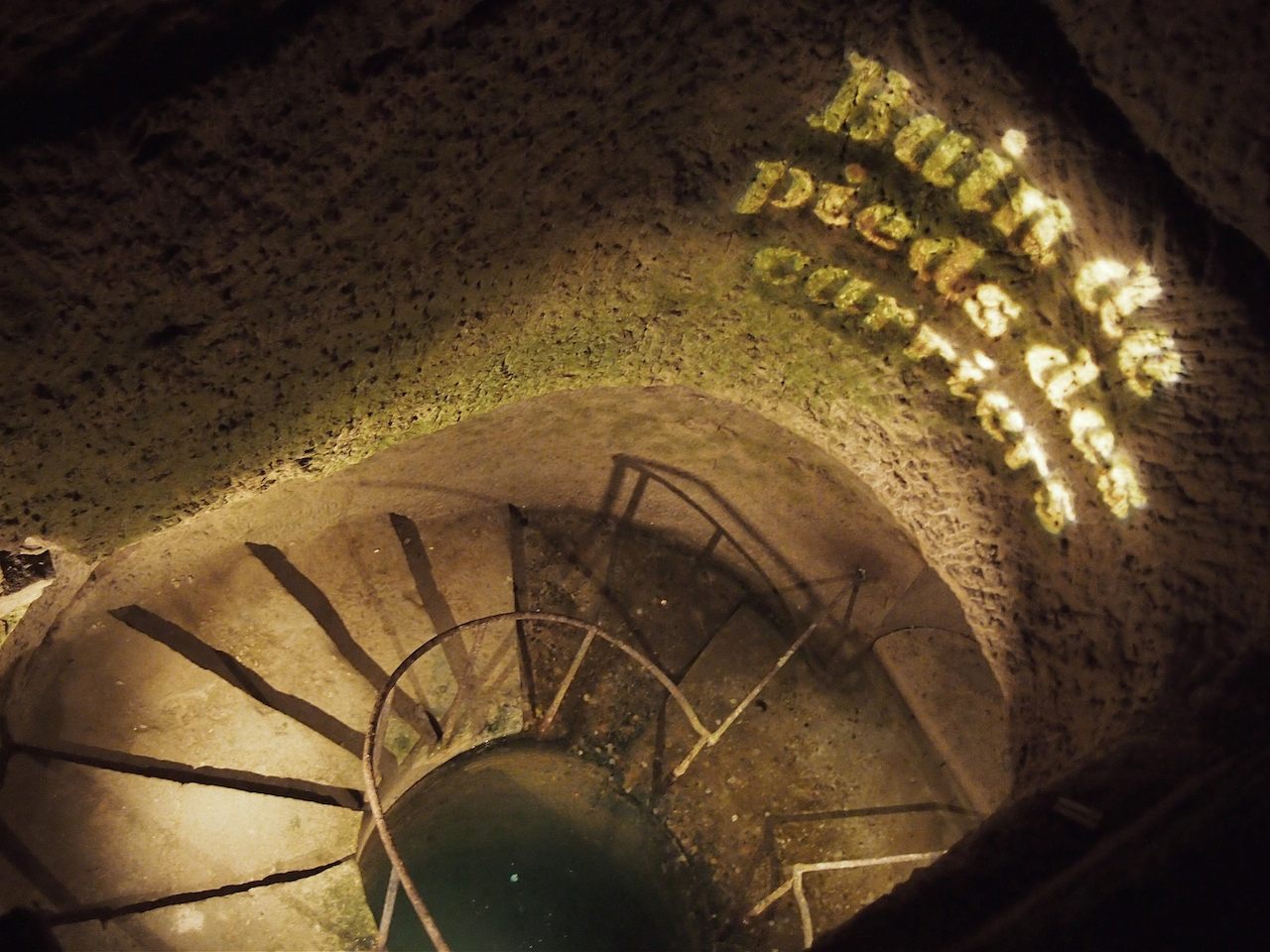 A spiral staircase in the Denfert-Rochereau section of the catacombs (all photographs by the author unless indicated)
A spiral staircase in the Denfert-Rochereau section of the catacombs (all photographs by the author unless indicated)
Perhaps the most well-known “ruin” in Paris is the catacombs, a network of quarries that span around 200 miles under the city (in fact Parisians have been known to compare their city to a holey cheese there are so many tunnels dug out under the surface). A small portion of the catacombs were renovated and turned into ossuaries when the original resting places for the bodies were no longer viable, giving it the reputation of being one of the world’s largest graves.
Since 1874, a section has been open on a regular basis for tourists. However, what a lot of tourists don’t realize is that this is only a small segment of the mass network of tunnels. Upon entering the ossuaries, you are faced with this warning: “Arrête! C’est ici l’empire de la Mort” (“Stop! Here lies the Empire of Death”), whereupon you are met with the first of the remains of the six million people that are buried within the catacombs.
As a popular tourist attraction, the catacombs now often have an enormous queue snaking around the block, thus it is always advisable to be early and expect a wait, and dress in layers — it can be extremely cold or hot outside, but the catacombs maintain a fairly consistent temperature once you enter the quarry tunnels. For the more daring, the museum is only the start of your potential journey. The tunnels extend far beyond what is available to see here, but nonetheless provides a fascinating visit. Though you might just find yourself bending the parameters of “easily accessible” and joining the cataphiles in order to seek out the rest…
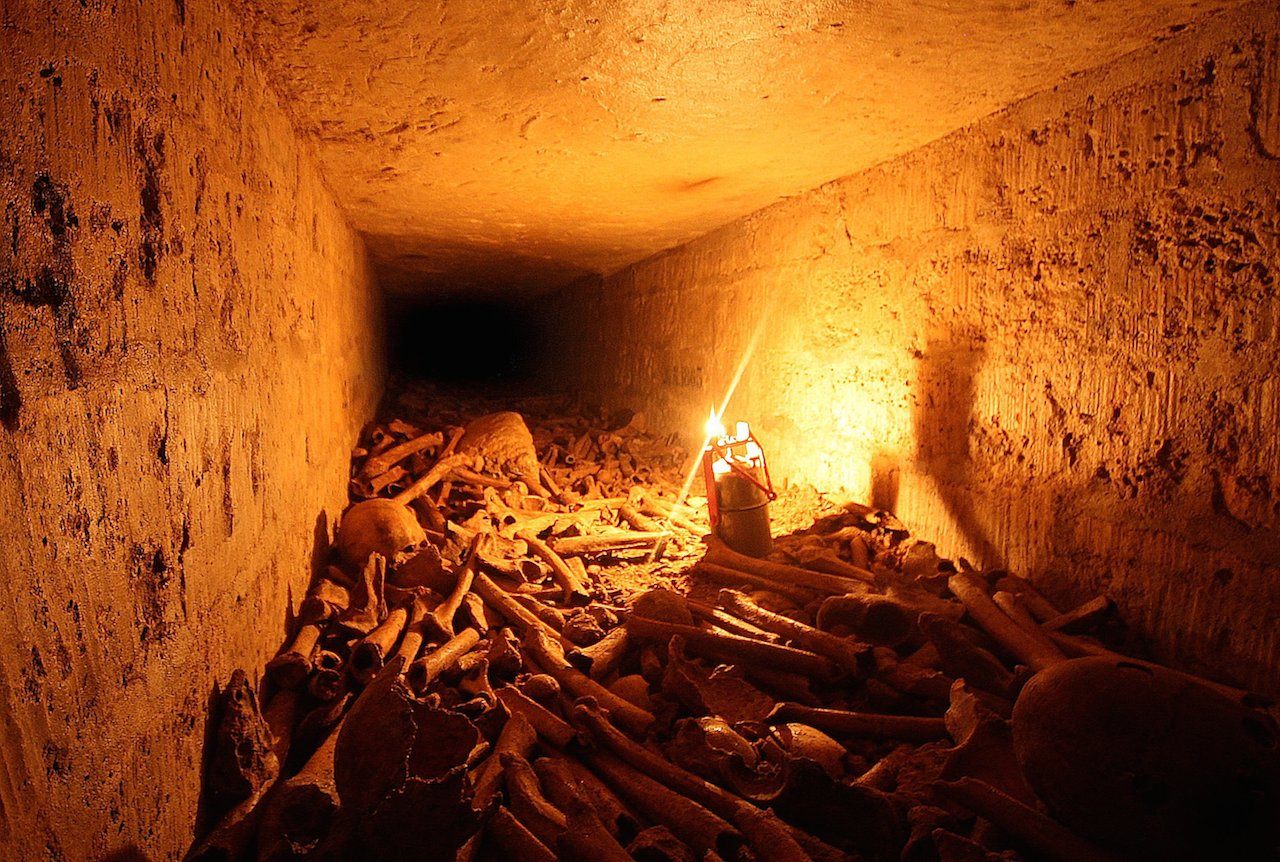 Le Carrefour des Morts (“The Crossroad of Death”), a part of the catacombs not open to the public (photograph by Adam Slater)
Le Carrefour des Morts (“The Crossroad of Death”), a part of the catacombs not open to the public (photograph by Adam Slater)
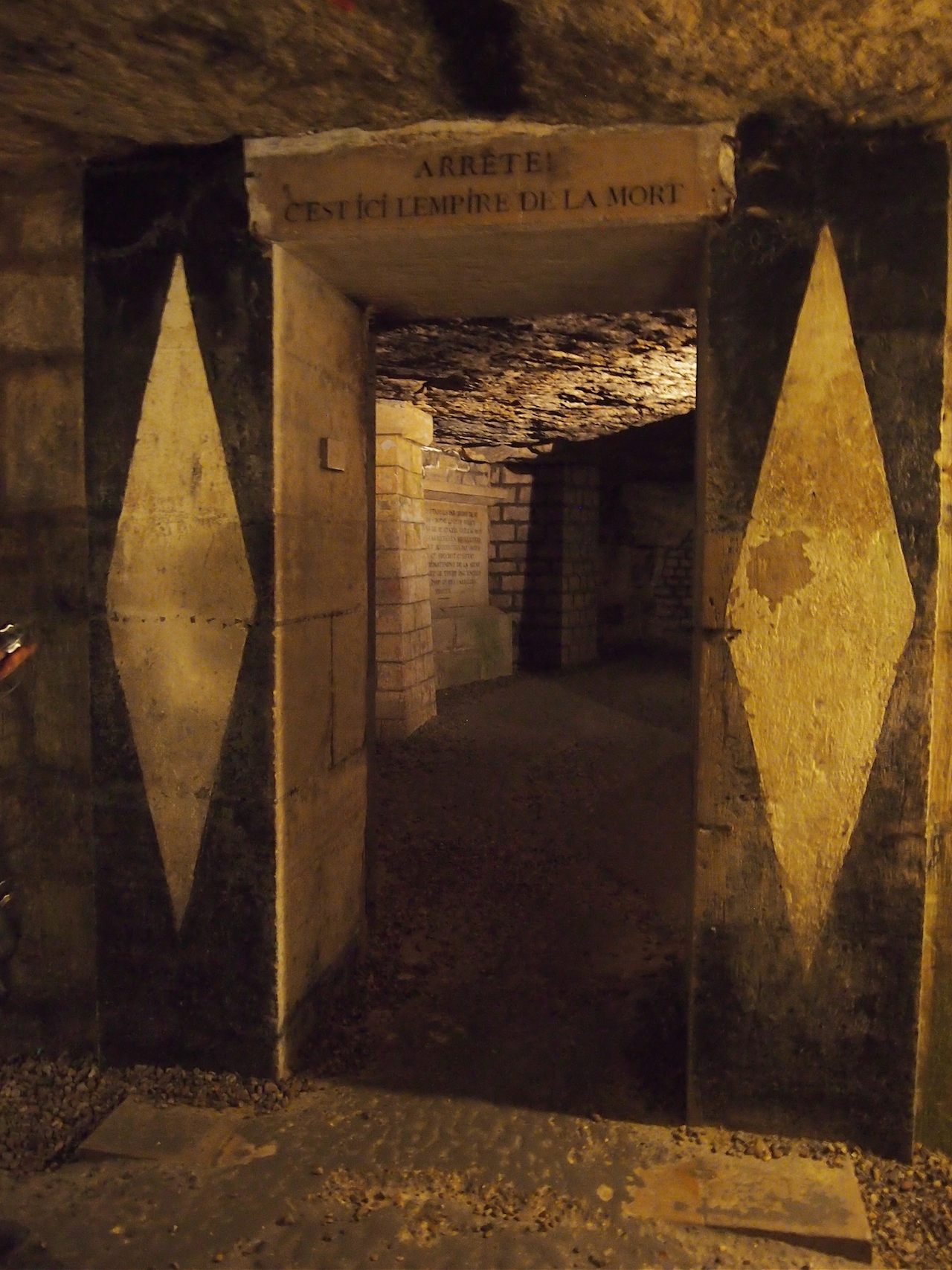 Entrance to the ossuaries
Entrance to the ossuaries
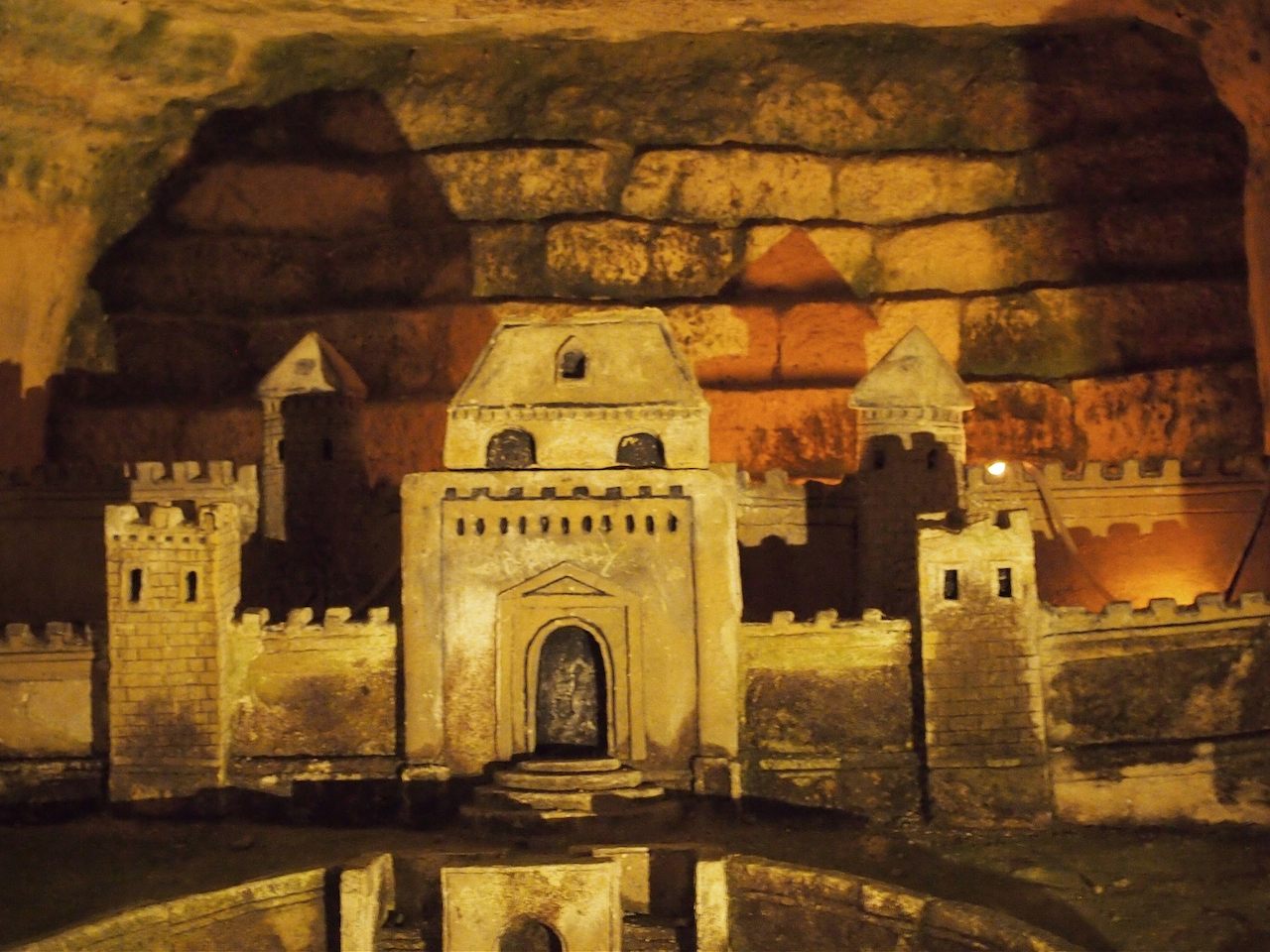 A sculpture of a castle in the catacombs museum
A sculpture of a castle in the catacombs museum
 “Sword in the Stone” room (off the museum section of the catacombs).
“Sword in the Stone” room (off the museum section of the catacombs).
LA PETITE CEINTURE
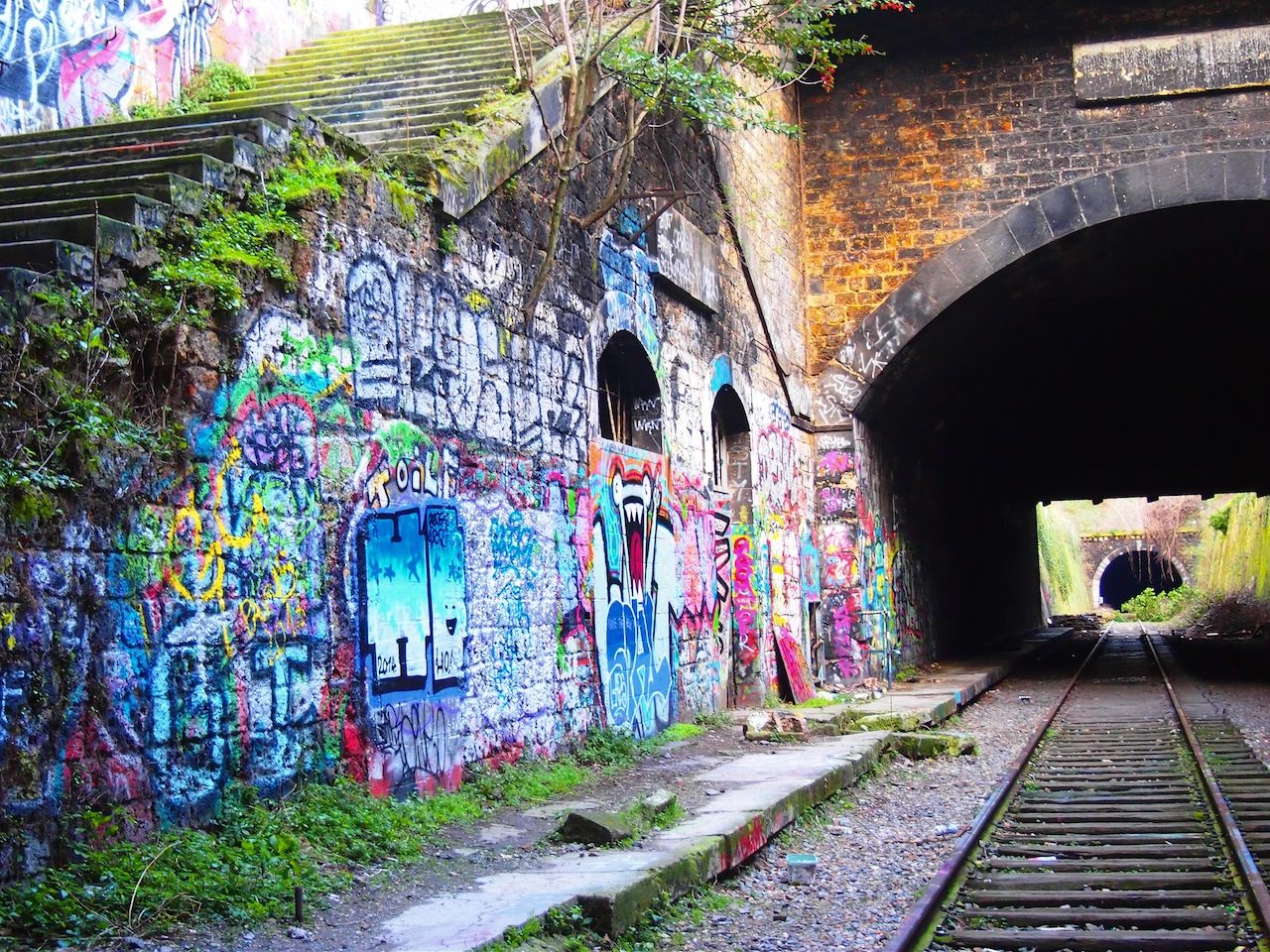 Gare Montrouge-Ceinture, demolished late 2014.
Gare Montrouge-Ceinture, demolished late 2014.
La Petite Ceinture, literally “the little belt,” is a disused railway line that at the time of its construction, encircled Paris. The 32km long line has served various uses throughout its life. It was originally intended for military use to quickly transport troops around the city; unable to fund the project themselves, the government had to turn to the commercial railway companies to seek finance.
At the time, Paris had five main train stations linking it with other major cities in France, but not to each other, thus it was decided that a better-connected network was imperative. Between 1852 and 1853, Paris saw the arrival of three sections of the Petite Ceinture line, to be used for freight and passengers. However these three sections long remained separate, and it was not until 1869 that the rails became a full “ceinture,” or “belt,” around Paris.
The tracks now exist in various states of abandonment, gradually falling out of use since 1924, with various projects being undertaken to reuse sections of it. The majority of the west is now the RER line C, and several stations have been turned into bars and restaurants. Many others were destroyed totally. Lately, whole sections of railway have been removed to make way for new accommodations, which makes visiting this ruin essential.
You may find yourself high up above the streets of Paris looking down on city life, or deep below in serene and peaceful trenches. You might walk across an abandoned station, huge ironwork bridges, street art, homeless settlements, bizarre sculptures, and always fascinating people. This is a truly unique view of Paris.
Accessing the abandoned sections is strictly forbidden, but nonetheless easy and the locals are always willing to help you find a way in. But if this is not your thing, then there is a portion that is now open as a park with plans to extend.
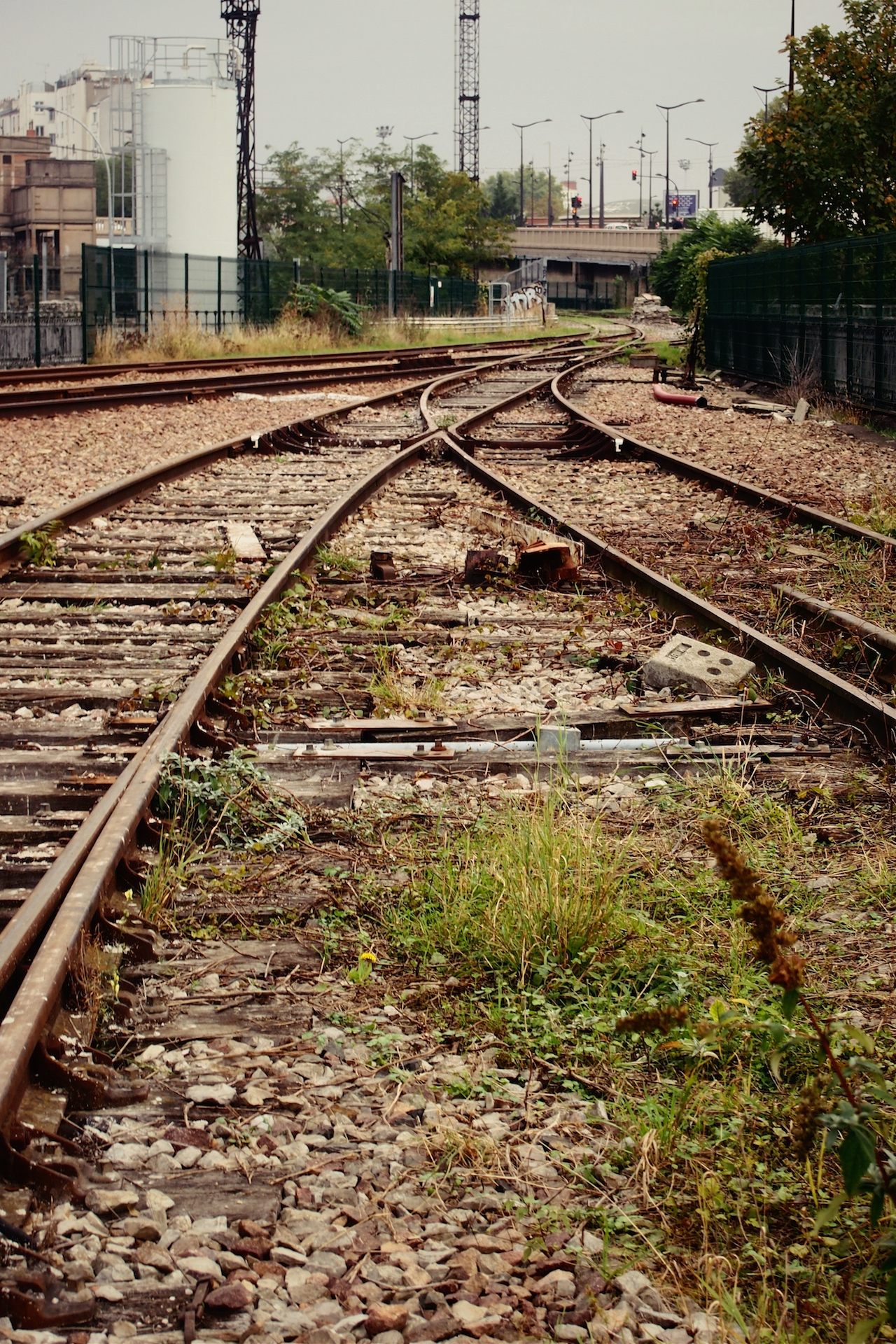
 The two above photos show the contrast between sections of the railway. First is the more industrial east of Paris, whereas the second shot shows the trench-like & overgrown line that runs through Parc Montsouris.
The two above photos show the contrast between sections of the railway. First is the more industrial east of Paris, whereas the second shot shows the trench-like & overgrown line that runs through Parc Montsouris.
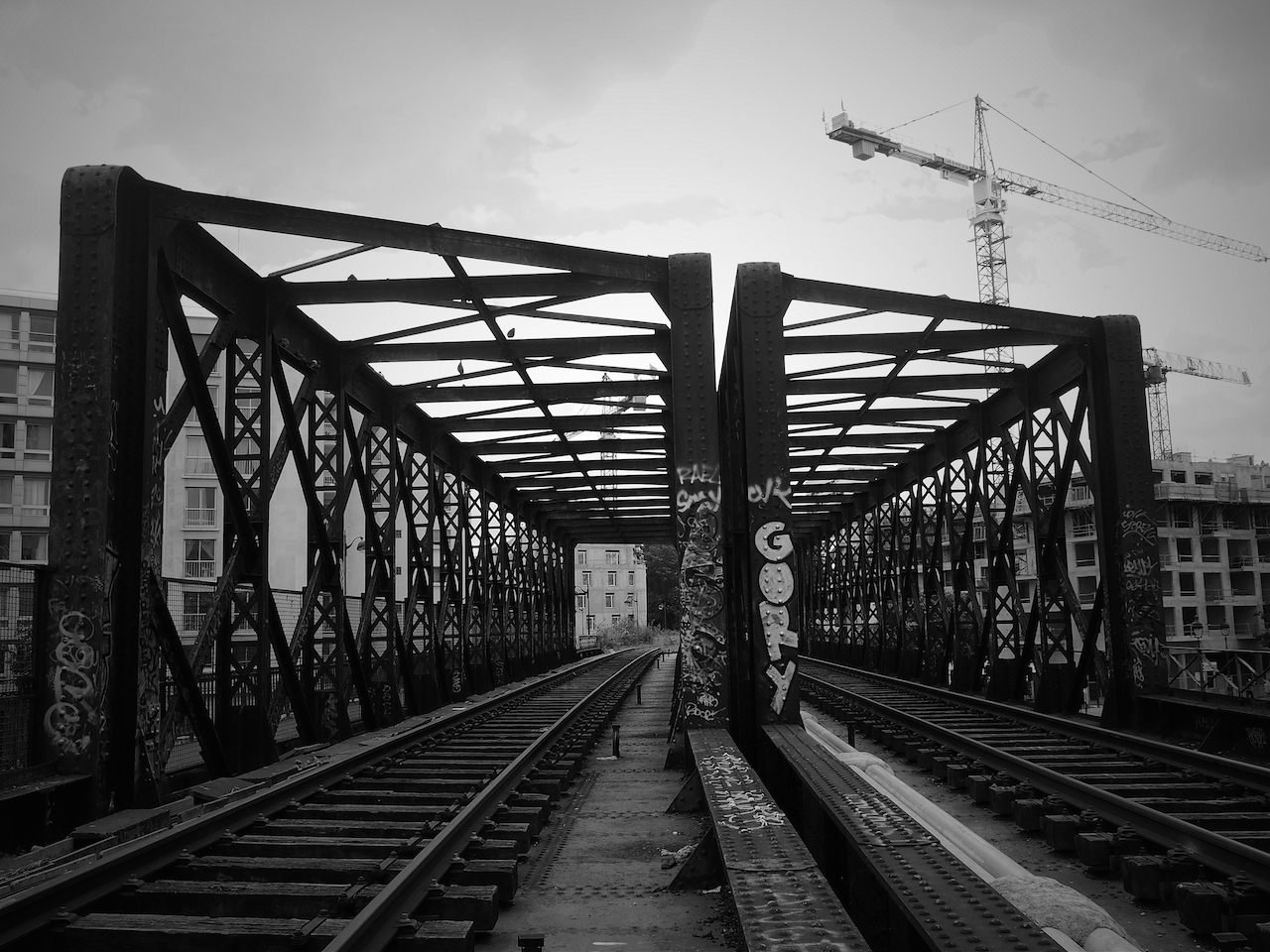 A bridge that runs through Parc Villette in the north of Paris.
A bridge that runs through Parc Villette in the north of Paris.
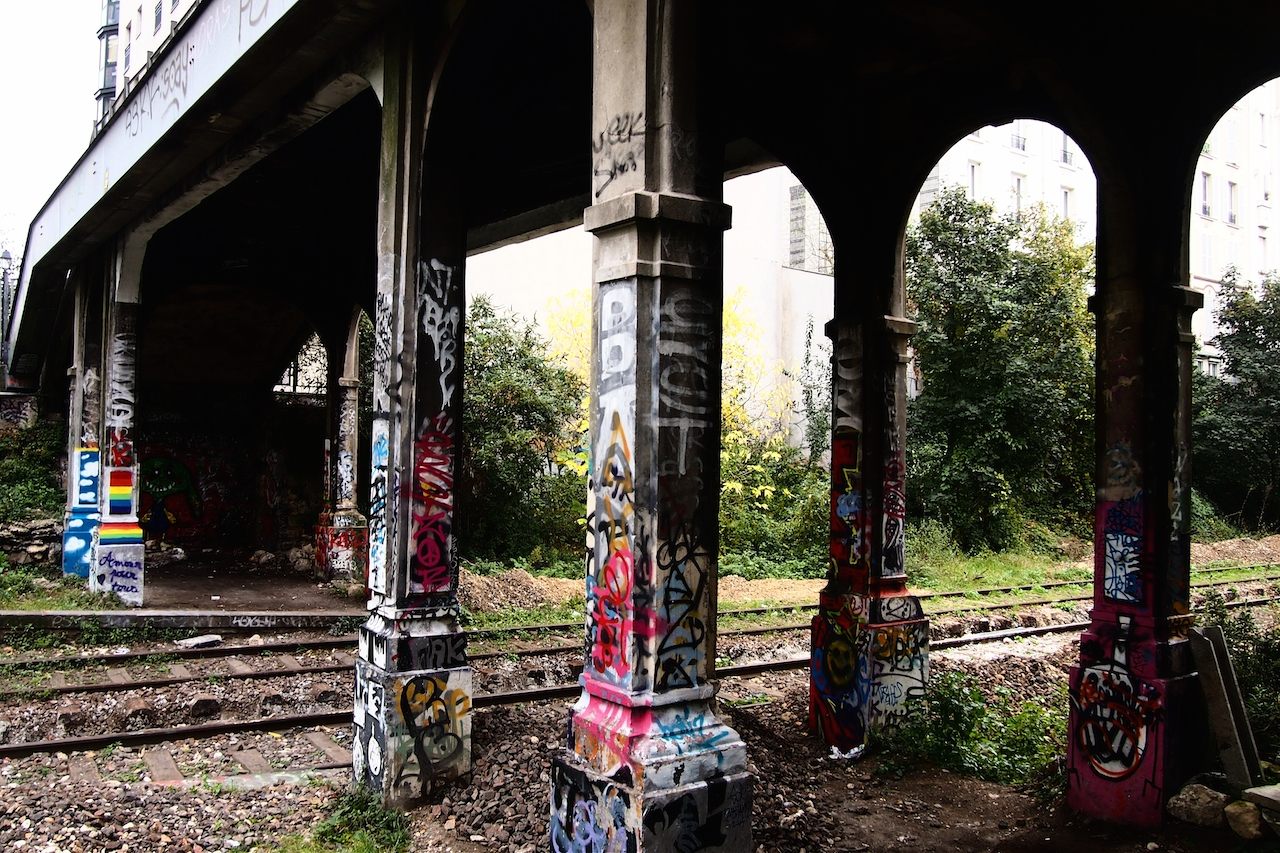 Many sections of the railway have been colorfully claimed.
Many sections of the railway have been colorfully claimed.
 The man who lives here has called the Petite Ceinture home for the last seven years.
The man who lives here has called the Petite Ceinture home for the last seven years.
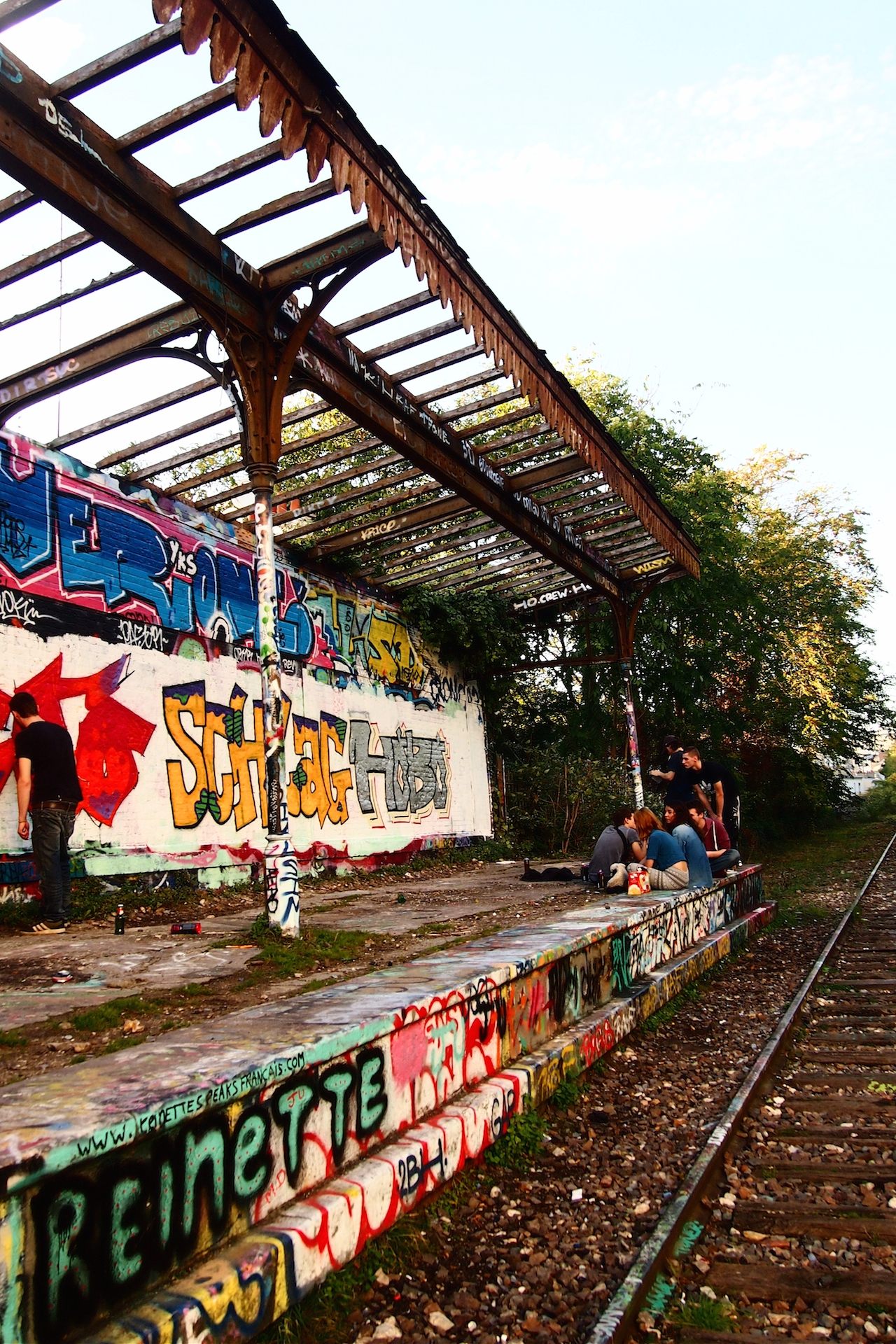 La Petite Ceinture has become a great meeting place for the unusually inclined and practicing graffiti artists.
La Petite Ceinture has become a great meeting place for the unusually inclined and practicing graffiti artists.
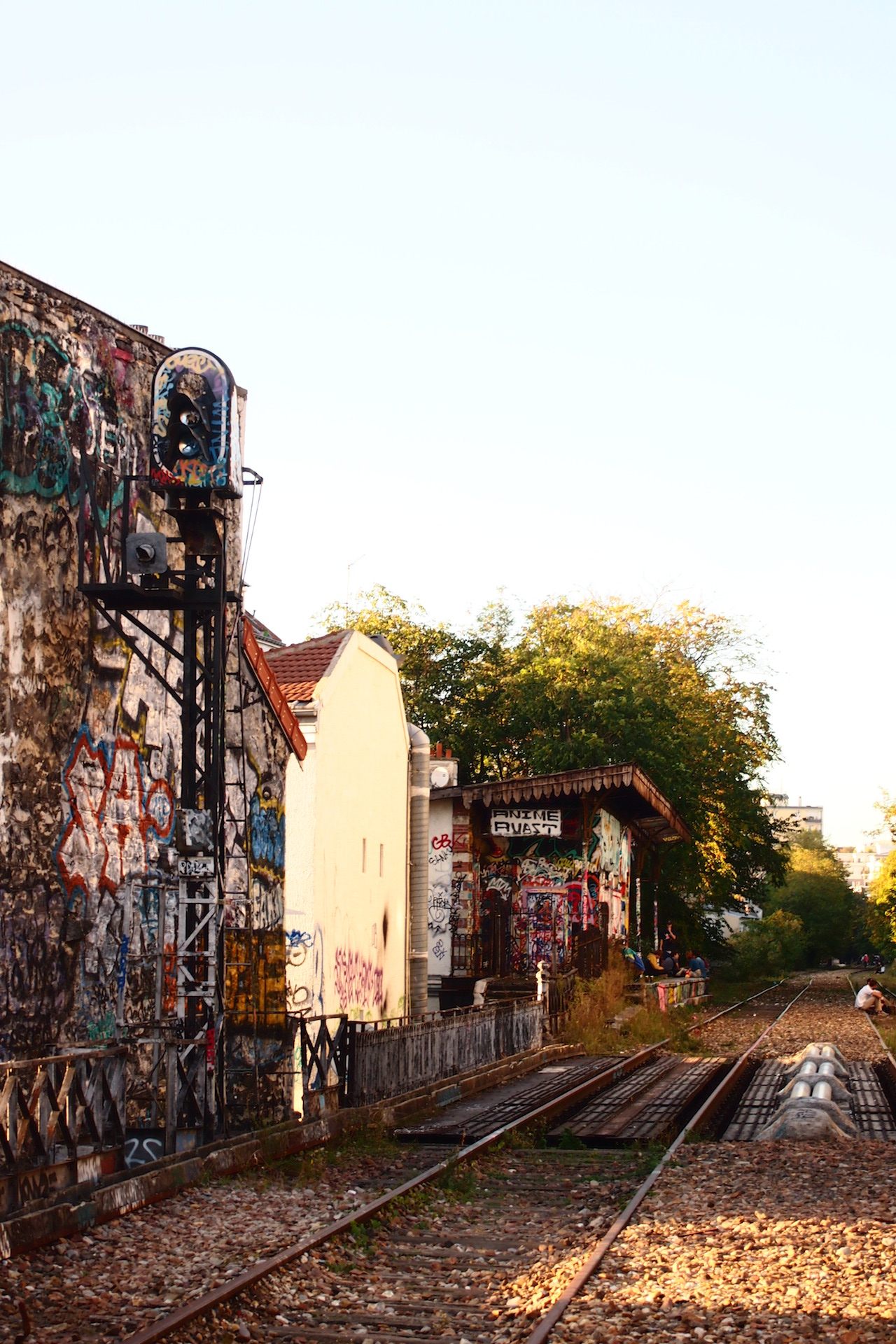
LES THERMES DE CLUNY
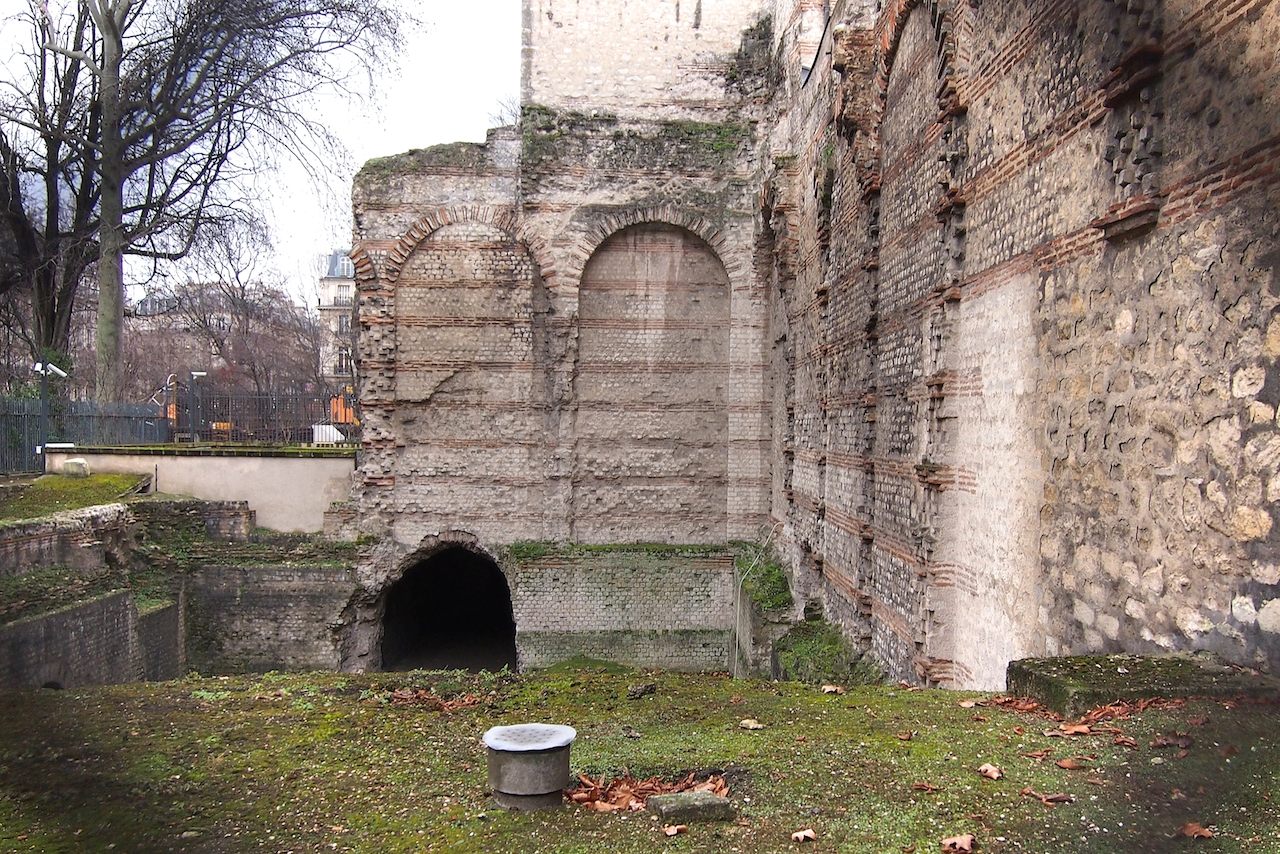
Partly absorbed by the Musée National du Moyen Âge - Thermes et Hôtel de Cluny, the Thermes de Cluny are the remains of a Gallo-Roman thermal baths. The thermal baths complex was thought to be constructed early in the third century; all that remains now is approximately one third of the original site. Some of the ruins can be seen from the street (see above), but the best-preserved are inside the museum. For instance the frigidarium room, which still contains elements of the original mosaics and paintings.
As the baths were not within the protective walls that sheltered the city in earlier times, they were an easy target for destruction, thus it is thought that towards the end of the century they were destroyed by a group of roving barbarians. The Thermes now largely exist as an archaeological site, and are some of the few Roman ruins left in Paris.
CHATEAU EDMOND DE ROTHSCHILD
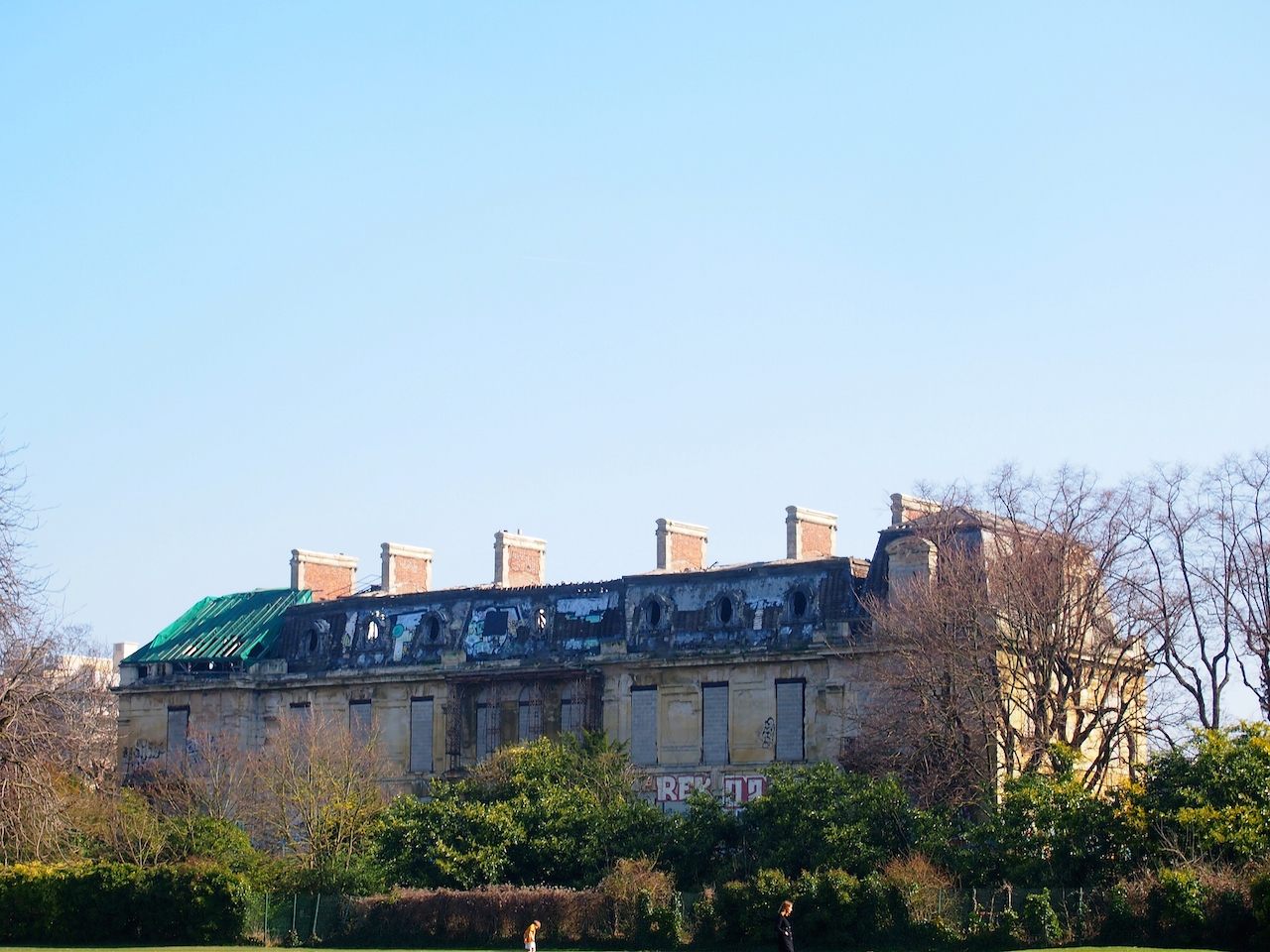 Château Edmond de Rothschild
Château Edmond de Rothschild
The Château Edmond de Rothschild was built from 1855 to 1861 to house banker James de Rothschild, designed in the style of Louis XIV and surrounded by various themed gardens. During WWII, it was plundered by the Nazis, then taken over by US troops. Having been abandoned by the family long ago, the Baron Edmund de Rothschild (James’s son) gave the property to mayor of Boulogne for a symbolic franc, who then quickly sold it. Construction of a main road and hospital truncated the gardens, which now exist as a park.
If you go see the mansion today, it is nestled among trees of the Parc Edmond de Rothschild behind fencing, and access is strictly forbidden. The roof is partially collapsed, and the walls are covered in graffiti, yet it is still a thing of beauty and there are ways to get near should you look closely.
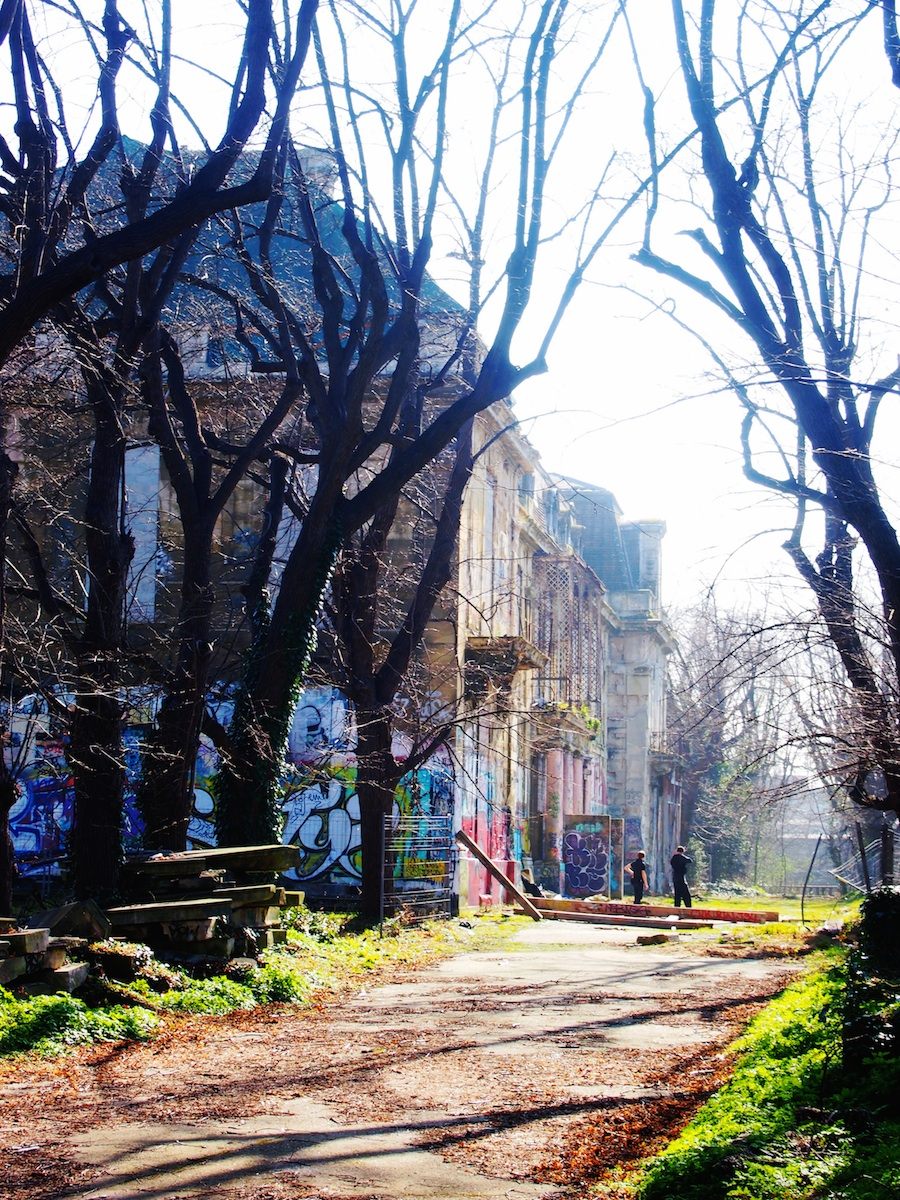 Side view to the château, on this day it was a choice location for some pellet gun practice.
Side view to the château, on this day it was a choice location for some pellet gun practice.
LES ARENES DE LUTECE

Along with the Thermes de Cluny, the Gallo-Roman era Arènes de Lutèce are some of the oldest ruins in Paris. The Arènes were once an amphitheater that could seat up to 15,000 people and was used for theater, gladiatorial combat, and circus productions. It was constructed in the first century AD, and was one of the longest built by the Romans. Five cubby holes were set up under the lower terraces (where the wealthy male citizens would sit, protected from the sun by an awning), three of which seem to have been animal cages which led straight onto the arena.
During the invasions of 280 AD, the amphitheater actually became a cemetery, and was filled in completely by 1210. Though the space retained its name, les Arènes, it was unclear where the arena had been, and it was not until the construction of Rue Monge in the 1860s that the arena was rediscovered. It was then partly uncovered and turned into a public square, which opened in 1896. The section that is present today is roughly a third of the original amphitheater.
GOUSSAINVILLE-VIEUX PAYS
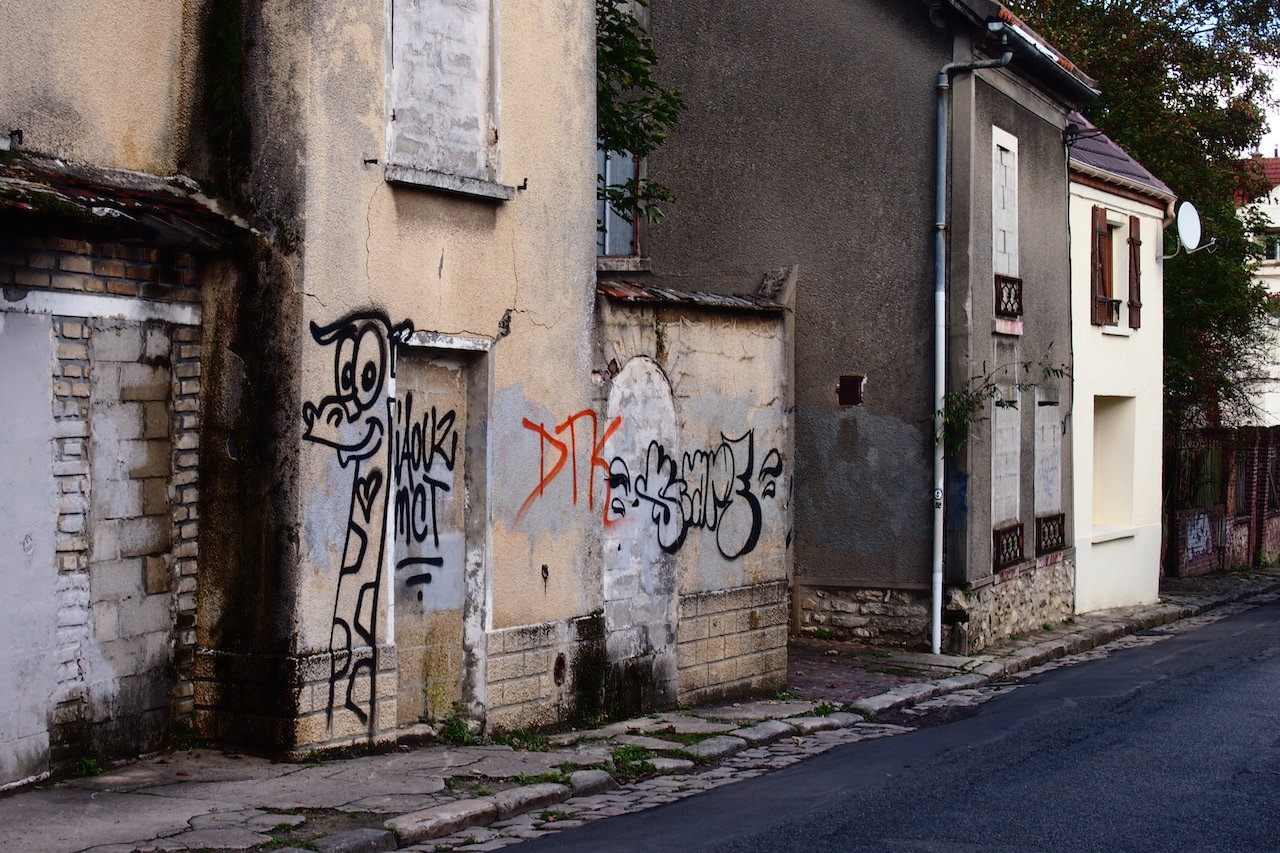 Abandoned properties in Goussainville-Vieux Pays
Abandoned properties in Goussainville-Vieux Pays
Just north of Paris lies the almost ghost town Goussainville-Vieux Pays, a town that was relocated to the current site of Goussainville, approximately 40 years ago. This drastic move was as a result of the original farming village being so close to the flight path of Charles de Gaulle airport; that, and a plane crash in 1973 which smashed a row of 15 houses and a school, killing six crew members and eight locals.
After, a great number of the inhabitants chose to leave almost immediately, which can be seen by the way the houses today are still full of remnants of their former lives. If you now wander the streets of Goussainville-Vieux Pays, you will encounter a town that has fallen into a state of decay. Many houses and store fronts show evidence of rotting, fire damage (sometimes it is hard to tell whether this was from the accident or vandalism), overgrown gardens, smashed windows, and falling away floors. Tucked away from the main streets of the town is also a château, now very dilapidated.
Though not strictly speaking an authentic ghost town — a handful of people do still live here — it does house a lot of ruins in very close proximity, making it a great day trip for those who enjoy exploring derelict sites. Just make sure you pack enough provisions, it is easy to spend several hours.
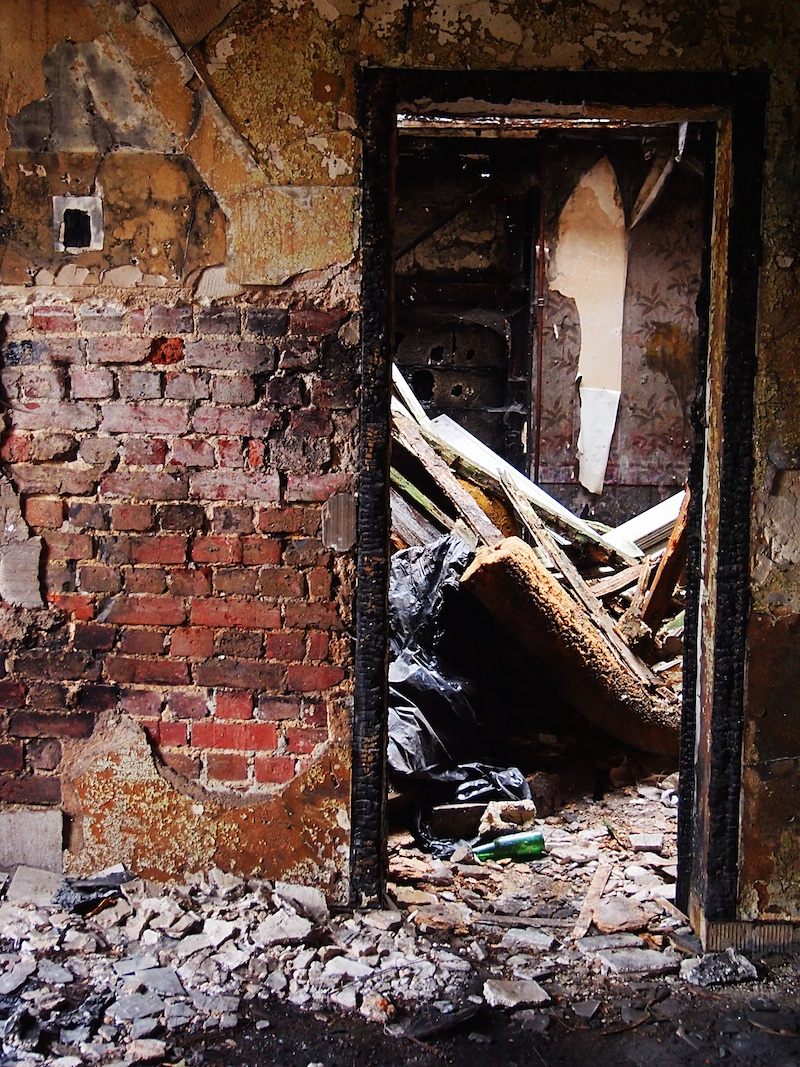 The burned-out inside of one of the many abandoned houses.
The burned-out inside of one of the many abandoned houses.
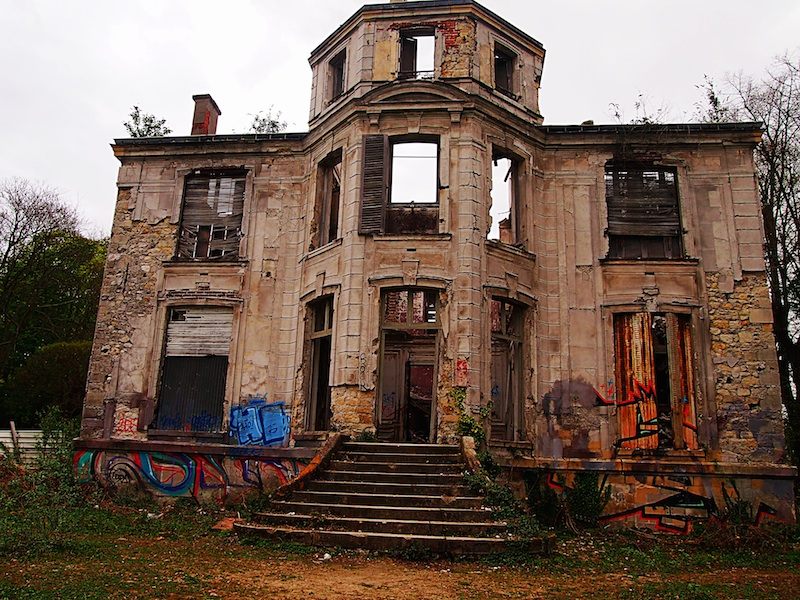 The Chateau of Goussainville-Vieux Pays.
The Chateau of Goussainville-Vieux Pays.
JARDIN D’AGRONOMIE TROPICALE

To the east of Paris are the remains of 1907 Exposition Coloniale. Upon entering the park in the Bois de Vincennes, which is now open to the public, you walk under a large Chinese portico, fading and crumbling. Behind lies a web of overgrown paths leading to various buildings, each symbolic of a region of French colonialism, and all left to decay.
The headless statues, worn signs, twisting paths, and eerie quiet all add to the mystery of the place, raising more questions than answering them. The once “human zoo” is made up of eight sections, with pavilions for Congo, Guyane, Indochina, Morocco, Réunion, Tunisia, and a collection of greenhouses. Each building is styled to represent an area of France’s colonial rule, and were built to house actual families shipped over for the 1907 Exposition.
Suffering large amounts of vandalism and lacking the funds to restore them, the buildings have been largely left to crumble. Due to the dirt paths, it is advisable to go on a dry day. Though it is somewhat creepy, it does make a fantastically unconventional location for a picnic as there are a lot of grassy spaces.




PARC MONCEAU
 The enchanted grotto of Parc Monceau
The enchanted grotto of Parc Monceau
Parc Monceau was built in 1778 at the request of the Duke of Chartres, Phillippe d’’Orléans, a cousin of King Louis XVI, who wanted to open a public park that displayed his eclectic tastes. He intended to have it built in the style of an Anglo-Chinese garden, filled with examples of architectural folly in order to amaze and surprise its visitors. It was designed to contain reproductions of different ages and countries, such as a Roman colonnade, a miniature Egyptian pyramid, a Tartar tent, a Dutch windmill, a water lily pond, an enchanted grotto, a temple of Mars, an Italian vineyard, and numerous antique statues.
At the time the garden also featured servants in oriental dress and exotic animals, such as camels. Unlike the Jardin d’Agronomie Tropicale which was built to mimic foreign cultures for spectatorship, Parc Monceau was built as for pure fantasy.
Over the years it has changed, as Paris went through its various revolutions and Haussmannian restructuring. Yet it is still open to the public, and many of its original features are still present, with the modern-day additions of a play park and free Wi-Fi.
 The Roman colonnade
The Roman colonnade
 A mini Egyptian pyramid
A mini Egyptian pyramid

CRYPT OF NOTRE-DAME
 Notre-Dame crypt (photograph by dalbera/Wikimedia)
Notre-Dame crypt (photograph by dalbera/Wikimedia)
Under the square in front of the Notre-Dame Cathedral lies a crypt which in 1980 was converted into a small museum for displaying archaeological remains of Paris, allowing visitors to see the stages in which the city developed, from its early Gallo-Roman roots as the settlement known as Lutetia, to the city we know today.
Whereas the other ruins in Paris listed here represent a specific time period, the beauty of the Notre-Dame crypt is that the focus is on the changes Paris went through as it progressed, from the Gallo-Roman period, to the early centuries, to the Middle Ages, and then to the rapid expansion and alterations that Paris experienced in the 18th and 19th centuries. Ruins are displayed alongside each other, and other images are superimposed on top, offering a unique insight to Paris history.
GHOST STATIONS OF THE PARIS METRO
 A Paris ghost station (courtesy an anonymous explorer)
A Paris ghost station (courtesy an anonymous explorer)
Just like most other aspects of Paris, the métro has undergone various restructurings and alterations to its subway plan, from expansions to renovations and even abandonment of some stations. Today the network holds 303 active stations, but unbeknown to many Parisians are the other ten or so stations that have been closed, built but never opened (and thus lack pedestrian access), abandoned in the early stages of construction, simply just moved, or merged with pre-existing stations.
At the start of WWII, the French government activated a plan which required an only partially operable metro service, keeping only 85 stations in use. Slowly some of the stations were reopened; three never were (Arsenal M5, Champ de Mars M8, and Croix-Rouge M10). Saint-Martin (M8 & 9) was temporarily used, but ultimately closed again due to its proximity to another station.
Perhaps two of the most interesting stations are the ones built and never opened — Haxo and Porte Molitor — which lack even entrances. These stations were used as linking points between other lines, but due to logistical issues and unpopularity they eventually closed. Today the tracks at Porte Molitor are used as a garage for other metro carriages.
Access to the stations is strictly forbidden, however very occasionally tours are given to the public which allow you to see the stations in their current state.




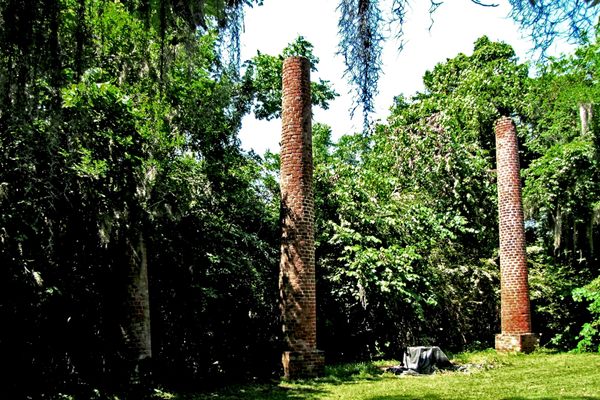


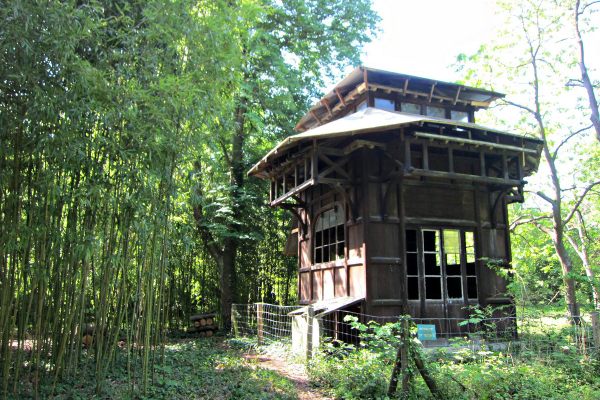









Follow us on Twitter to get the latest on the world's hidden wonders.
Like us on Facebook to get the latest on the world's hidden wonders.
Follow us on Twitter Like us on Facebook